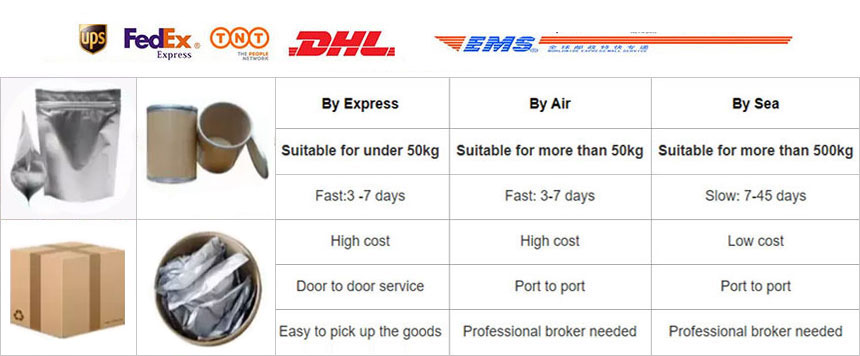Phone: 86-29-89601602
Mail: sales27@interlgroup.com
Add: Room 305 , 3/F , Haipai Decoration Office Building , Yudu Avenue , Yuncheng , Shanxi
Factory Supply Tetrahydrothiophene liquid CAS 110-01-0 Raw Materials
Product Overview:
Tetrahydrothiophene liquid, also known as sulfur heterocyclic pentane, tetramethylpropyl sulfur, stretching butyl sulfide, tetrahydrothiophene, is a sulfur-containing saturated heterocyclic compound obtained by catalytic hydrogenation of thiophene, thiophene is reduced to tetrahydrothiophene, it no longer has the conjugate system and the aromaticity, so Tetrahydrothiophene liquid shows general Tetrahydrothiophene liquid shows the properties of general sulfur ether, easily oxidized to sulfoxide and sulfone (cyclobutyl sulfone).Tetrahydrothiophene CAS 110-01-0 is a colorless transparent liquid with volatility, insoluble in water, miscible in ethanol, ether, benzene, acetone. Has a strong unpleasant odor, Tetrahydrothiophene Raw Materials produced by the odor is stable, not easy to disseminate, the presence of 0.01PPm in the air can be smelled, on the gas equipment, transportation pipeline gaskets and other materials are not corrosive to the human olfactory sense will not produce habitual obtuse, so Tetrahydrothiophene Raw Therefore, Tetrahydrothiophene Raw is used as a leakage warning agent for city gas, natural gas and other gaseous fuels, and is added to gaseous fuels in small quantities, which outlaws the use of ethanethiol and other odorifiers.
Factory Supply Tetrahydrothiophene liquid CAS 110-01-0 Raw Materials Attributes
MF:C4H8S
MW:88.17
EINECS:203-728-9
Specification:Tetrahydrothiophene liquid
Sample:Tetrahydrothiophene liquid
Brand: Tetrahydrothiophene liquid
Appearance: White liquid
Storage: Cool Dry Place
Brand: Globalchemical
Shelf Life: 2 Years
Test Method: HPLC
Factory Supply Tetrahydrothiophene liquid CAS 110-01-0 Raw Materials Details
Uses and synthesis of Tetrahydrothiophene liquid
Tetrahydrothiophene liquid, also known as thiophene, tetramethylthiophene, tetramethylthiophene, tetrabutyl sulfide, tetrahydrothiophene, is a sulfur-containing saturated heterocyclic compound obtained by catalytic hydrogenation of thiophene, thiophene is no longer conjugated and aromatic after being reduced to tetrahydrothiophene, so Tetrahydrothiophene liquid shows the general properties of sulfur ethers.

Tetrahydrothiophene liquid shows the properties of general sulfur ether and is easily oxidized to sulfoxide and sulfone (cyclobutyl sulfone).Tetrahydrothiophene CAS 110-01-0 is a colorless and transparent liquid with volatility, insoluble in water, miscible in ethanol, ethyl ether, benzene, acetone. Has a strong unpleasant odor, Tetrahydrothiophene Raw Materials produced by the odor is stable, not easy to disseminate, the presence of 0.01PPm in the air can be smelled, on the gas equipment, transport pipeline gaskets and other materials are not corrosive to the human olfactory sense will not produce habitual obtuse, so Tetrahydrothiophene Raw Therefore, Tetrahydrothiophene Raw is used as a leakage warning agent for city gas, natural gas and other gaseous fuels, and is added to gaseous fuels in small quantities, outlawing the original use of ethanethiol and other odorifiers.

At present, the domestic market demand for tetrahydrothiophene is about 400 tons/year, mainly relying on imports.Tetrahydrothiophene liquid has anesthetic effect. When mice are poisoned by inhalation, motor excitation, ataxia, anesthesia and finally death occur. In chronic poisoning experiments, mice showed abnormal behavior, weight growth stop and liver function changes. In addition, Tetrahydrothiophene Raw Materials are also used as raw materials for pharmaceuticals, pesticides and organic synthesis.
Applications / Functions of Tetrahydrothiophene liquid
- Tetrahydrothiophene Raw Materials are used as odorizers for city gas, liquefied petroleum gas, natural liquefied gas and other fuel gases, and are also used as raw materials for pharmaceuticals and pesticides.
- Tetrahydrothiophene CAS 110-01-0 is used as solvent and organic synthesis intermediate. Used in the synthesis of pharmaceuticals and photographic materials. Used as fuel gas additive to improve safety because of its special odor.
Physicochemical Property of Tetrahydrothiophene liquid
Tetrahydrothiophene liquid colorless or slightly yellow transparent liquid, melting point- 96.2℃. Boiling point 119℃. Density 1.OOg/cm3, insoluble in water, soluble in ethanol, ether, benzene, acetone. Flammable, flash point 12.8℃.

production methodprocess of Tetrahydrothiophene liquid
- Obtained by the reaction of 1,4-dihalobutane and sodium sulfide in alcohol. It is obtained by catalytic hydrogenation of thiophene, but the catalytic hydrogenation of thiophene is difficult, and the nickel catalyst is easily poisoned by thiophene and fails, and the use of Raney's nickel catalyst often leads to desulfurization reaction, and the result is that the butane becomes the main product. Thiophene can not be reduced to Tetrahydrothiophene liquid except in the presence of molybdenum disulfide or greatly excess palladium carbon.
- The classical synthesis of this product uses the hydroreduction of thiophene in the presence of a catalyst. Thiophene mainly exists in the fraction of coal tar crude benzene, accounting for only 0. 5%, and the boiling point difference with benzene is 4 ℃, separation is extremely difficult. The price is expensive. Tetrahydrofuran as raw material, in the presence of heteropolyacid catalyst with y-Al2 03 as carrier, hydrogen sulfide direct sulfation to generate tetrahydrothiophene. Process Tetrahydrofuran, nitrogen, hydrogen sulfide gas into the fixed-bed reactor equipped with catalyst in proportion to the reaction; after two separations to get the product Tetrahydrothiophene Raw Materials, unreacted raw materials can be recycled.
- Refining method: Tetrahydrothiophene CAS 110-01-0 is adducted with mercuric chloride in ethanol. The resulting crystals are refined by recrystallization and then heated with concentrated hydrochloric acid. The generated Tetrahydrothiophene is separated from the aqueous layer, washed with water and dried with calcium chloride, and fractionated under reduced pressure.










